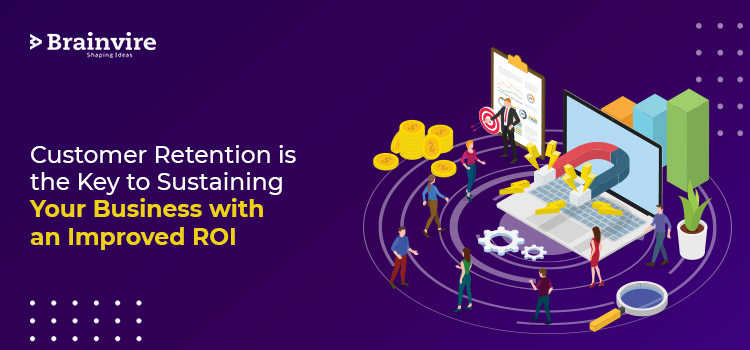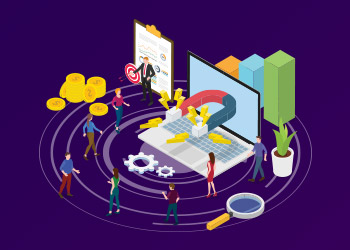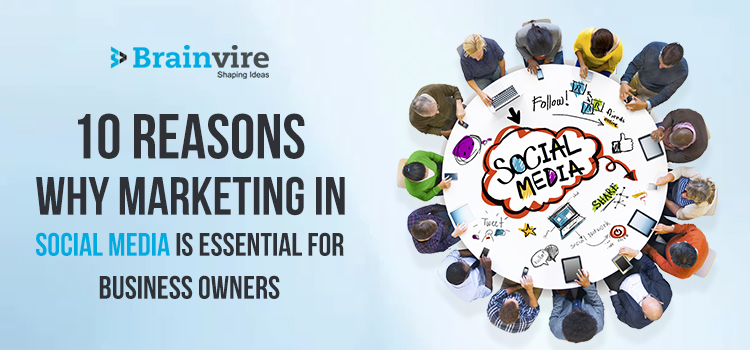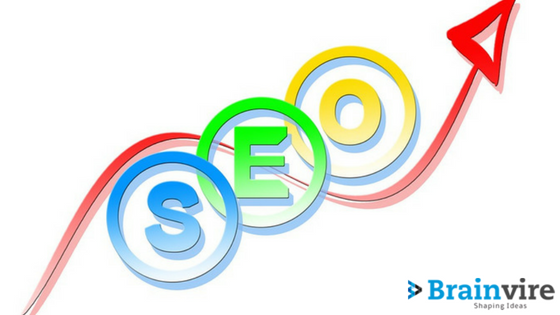
In this digital realm, a man with a mobile food center on a street corner in New York City can also register his company with online food distribution apps, Google my business, and do social media marketing of his food corner to gain more customers and grow his customer base. He can acquire new customers through various promotional activities, but what matters is how he treats his existing customer. If that man believes he should first effectively manage his new acquisition to grow his customer base, what about his existing customers?
For example, if a retail eCommerce solution has included the most effective marketing campaign on digital channels such as Facebook and Instagram, showcasing the delectable food with a fantastic caption and bid, customer acquisition would ramp up. The point is if we can develop a consistent SEO strategy for acquiring new customers, why can’t we do the same for customer retention? If you do not give the same attention to loyal customers, the customers are more likely to believe that your service is only giving importance to new customers and not to retain customers to increase the business.
In this blog, we’ll explain why customer retention is so important, why it’s more profitable than customer acquisition, and the key benefits of Customer retention management.
[Also read: What Makes Omnichannel The Best To Feed Your Ecommerce Needs?]
What exactly is Customer Retention?
Customer retention is described as the process of encouraging existing customers through a customer loyalty program to make them continue buying your product or service. It is not the same as attracting new clients.
Why is Customer Retention important?
If you own an eCommerce online company and a new client comes to the Men’s T-shirt section’s landing page from Instagram and loves the collections, ranges, patterns, and various T-shirt brands that you displayed. He agrees to take the set of three that is on buy 2 + get 1 free deal. He then proceeds to the next page, which is your Denim section. He likes the collection and decides to choose one pair of jeans while adding the others to his cart. What we’ve learned from this is that he was a buyer who was directed from Instagram to the landing page of the T-shirt section, and from there he landed into the denim section and became an active customer.
So, the next time he visits your online shop, it is not that he will again come for a T-shirt or Jeans, nor is it necessary that he would land from Instagram. He is already a registered customer; he may have registered his email, mobile number, and the account information he used to make his last payment. So, if he is a current customer, it is easily trackable, because the CRM records the data of how much the customers spend on an average along with their last purchase details. If you use your current customer data and customer feedback wisely and work on things like personalized messages with regular updates on a new product or service features, you can get them back, which is seen as a positive customer retention strategy.
Furthermore, if you don’t have a customer loyalty program plan in place, such as after-sales support, your loyal customer might go to your competitors, and your customer loyalty and Lifetime Value will bear the brunt. This is why customer retention is so important for ROI; there will be an increase in customer loyalty and allows you to acquire new customers via referrals of existing customers.
I hope it is now clear how important it is to retain customers and why loyal customers are more likely to be believed important.
Let us now discuss how to measure the customer retention rate for your company.
The customer retention rate demonstrates that it is more important than acquiring new customers. If the customer retention rate decreases, it indicates that the existing customers of your company are dissatisfied with your service. Businesses should quantify it correctly and create a customer loyalty program that will ultimately increase the sale, ROI, and lifetime value of a customer.
Let’s look at the formula for calculating customer retention rate:
The formula is as follows: ((E-N)/S) x 100 = Retention Rate
E = Total number of customers at the end of the time period
N denotes the number of customers acquired during the time period.
S = The number of customers at the start of the time period.
Here’s an example: You have 88 customers, you gain 24 new customers and 26 customers:
[ ( 86 – 24 ) / 88 )] x 100 = 70% retention
Another example: Think that you started your year with 40 customers, gained 10 new customers in the first quarter, and have 2 customer churn.
[ (48- 10) / 40 ) ] x 100 = 95% retention
This is how you should calculate the retention rate and work on the missing percentage and customer churn rate with the best marketing strategy. This is why customer retention is so important for ROI and growth in the LifeTime Value.
This formula will assist you with properly understanding customer churn by providing detailed information on your customer journey towards your online store. If you’ve deciphered the customer churn results, you can create a customer feedback form to learn about the customer experience and what went wrong.
Why is Customer Retention more profitable than Customer Acquisition?
From the above sentences, you might be thinking about why customer retention is considered more relevant than acquiring new customers. The point is, every consumer-oriented business has outsourced its customer handling divisions to BPOs, and only a few of you have your internal team to manage customer inquiries to improve your customer retention.
The ecommerce giant Amazon has a customer retention division to retain customers, like the sales and customer service department. With an excellent customer loyalty program and after-sales support, this customer retention team ensures that existing customers are handled in the same manner as new customers.
For example, in the pandemic, an IT outsourcing business was struggling to get business, which resulted in pay cuts and layoffs. However, the CEO and the customer sales team developed a customer loyalty program to approach existing and old clients with better offers and deals, as well as other new strategies for increasing customers for the client’s business during the pandemic. This concept turned the table and witnessed revenue growth simply by retaining existing customers.
If you are looking for the right eCommerce development services to take your business to the next-level, contact Brainvire today.
This was a smart tactic that succeeded during the pandemic, and their customer retention rate is now 98 percent, with annual revenue increasing from $8 million in 2020 to $10 million in 2021. Furthermore, after the pandemic, companies had little capital to spend, and even though they did, they spent it wisely on previous business partners. So you see, this is why customer retention is so important than customer acquisition.
Entrepreneurs will only understand if words like LTV and ROI are shown to them when it comes to the customer. So they continue to ask: Why does customer retention matter?
For those who want to know why customer retention is still important, let’s take a deep dive into it.
[Also read: E-commerce Factors You Need to Leverage to Boost Sales and Visibility]
Customer Retention vs Customer Acquisition is as follows:
Cost-effective: They are just a phone call away, and they do not need to spend money on paid campaigns, brochures, data acquisition, or other marketing practices that require money.
Easy to communicate: Much of the time, the customer success team is in direct contact with the clients, and some of them develop into a family relationship, while we cannot be as warm in terms of communication with new customers. The only thing to remember is to have three to four employees in constant contact with the client; otherwise, once the customer success manager exits, there will be a communication breakdown.
Customer Loyalty: Once established, customer loyalty will not be broken for years; however, a customer retention strategy is required, and it is equivalent to using the Customer Lifetime Value. If you want to measure the consumer lifetime worth here, follow these steps: Multiply customer value by the average customer lifespan. This would give you an estimate of how much revenue an average client will generate for your business throughout their relationship with you.
During the pandemic, many sales-oriented businesses were trembling to achieve their annual sales revenue along with the sales team. They were anxious as a result of this. Let me reiterate once more that customer retention management will benefit you with growth in ROI, and revenue growth.
Let’s talk about a couple of the benefits of Customer Retention Management, but first, let’s go over the process itself.
Discover your true business potential with the help of Brainvire’s dynamic eCommerce development Solutions.
What is Customer Retention Management?
Customer retention management is a process in which companies manage and sustain a relationship with loyal customers and current customers through customer retention strategies like offering exclusive deals and personalizing daily reminders about responsive service across various mediums and resources. For a smoother customer retention operation, customer-focused companies develop efficient customer retention strategies. It’s a huge subject, so we’ll go into Customer Retention Strategies the next time.
Now, let’s get further into a couple of customer retention management benefits.
Retention is more cost-effective than acquisition: We previously addressed this benefit in why customer retention matters. The process of customer retention is less expensive and needs less spend to retain them.
[Also read: AI Revolution Through Mongo DB: Will It Fuel E-commerce Sales?]
Retaining loyal customers has a higher ROI: This is right. According to studies, existing customers are 90% more loyal than new customers, pay 70% more than new customers because they have already seen a return, and offer over 20% more ROI than newly acquired customers.
There are others, but the key goal of a company is to retain existing customers with the latest customer retention management strategies and learn the value with maximized ROI.
To learn more about how Brainvire and our complete ERP solution can help you to increase your customer retention rate using CRM, buzz us today.
Related Articles
-
How Online PPC Bidding on Amazon Work in 2023?
Your bid could significantly impact the results of your Amazon advertising campaign. Even well-planned ads that are aptly directed at the niche audience sometimes fail to meet expectations. That’s because
-
10 Reasons Why Marketing in Social Media is Essential for Business Owners
Businesses, especially the smaller ones, are very careful about the type of marketing channel they choose to advertise their brand or product. Since such businesses have very limited resources, it
-
How To Improve CTR Using Rich Snippets?
Are you aware of what some of the biggest concerns are in SEO? Among a lot of things to worry about, one major stress point is how CTR can be



